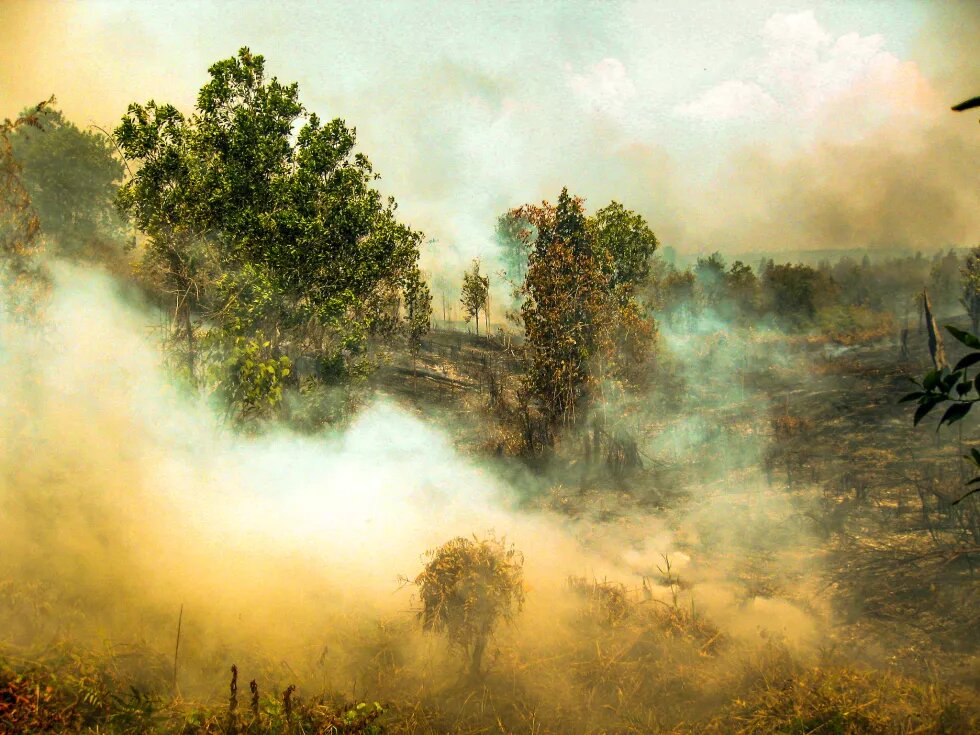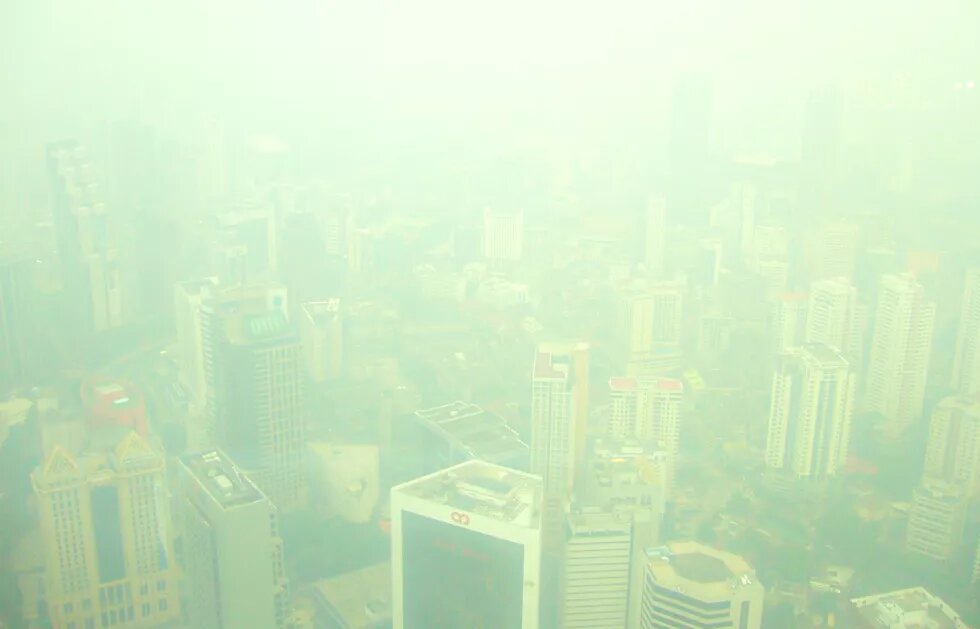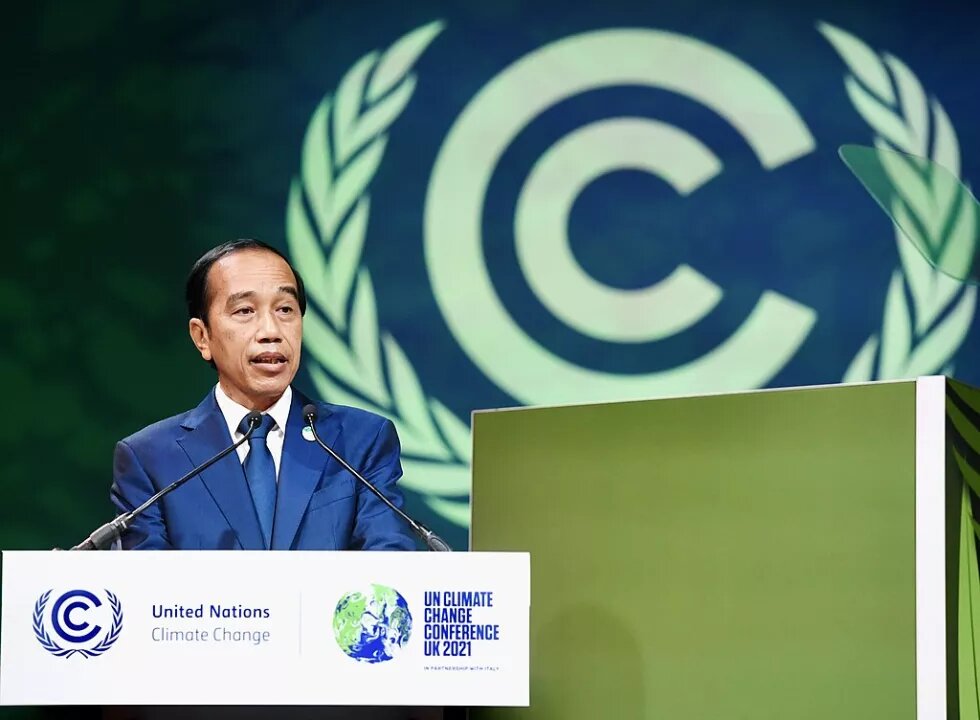
Transboundary haze has plagued Southeast Asia for decades, with the most recent episodes occurring in 2015 and 2019. While COVID-19's constraints on economic activity delivered the qualified blessing of two comparatively haze-free years, the region is now bracing itself for the return of the almost annual haze as countries shift to endemic mode.

In maritime Southeast Asia, haze mainly originates from conflagrations in drained, fire-prone peat landscapes in Indonesia and to a lesser extent Malaysia, directly and indirectly linked to large- (palm oil and pulpwood) and small-scale agriculture. In the Mekong region, haze is produced by the intentional burning of commercial and small-scale crops like maize, rice, and sugarcane at the end of their cycles.
In both subregions, the smoke produced from these fires can travel great distances and can affect almost all Southeast Asian states for months at a time. In the north, the haze season regularly occurs in the first quarter of the year, while in the south, haze usually happens from September onwards.
Haze casts a visibly grey or yellowish pall across the landscape and carries a distinctive smell of burnt wood. On especially bad days, schools and airports are shut down, with serious knock-on effects on emergency budgets, productivity, and tourism. The Singapore government and researchers estimated losses of between $500 million[1] and $1.34 billion[2] from the 2015 haze episode. For the 2019 haze event, the World Bank estimated $5.2 billion[3] in losses for Indonesia, while researchers in Thailand estimated $77 million[4] in losses for Bangkok alone.
Haze particles, some as fine as 2.5µm (Particulate Matter or PM2.5), can easily enter the breathing tract and even the bloodstream. It can cause not only serious respiratory problems but also cardiovascular, dermatological and opthalmological issues as well, and children and the elderly are especially vulnerable. In 2015, studies estimated that between 40,000[5] and 100,000[6] additional deaths occurred due to haze in southern Southeast Asia alone.
(Overly) Measured Governance Responses
The transboundary nature of haze, and the fact that these fires are closely linked to lucrative economic activities, have complicated haze mitigation at the national, bilateral, and regional levels.
In Indonesia, politically connected commercial plantations easily obtain permits to establish plantations on (usually protected) peatlands. Even though plantations have reduced the intentional use of fires, these disturbed landscapes remain fire-prone. Furthermore, corporate fire prevention activities like canal blocking can hold back water from surrounding villages, increasing the fire risk there[7]. In Thailand, the majority of hotspots have been found on commercial croplands, but government and corporate rhetoric continue to pin the blame on small-scale farmers.
I have written extensively elsewhere[8] about how patron-client relationships between commercial plantation leadership and local and central government officials create a culture of impunity where these companies are rarely held accountable for their role in the fires. For example, despite many initial arrests and ample evidence, only a handful of companies have been successfully prosecuted in Indonesia.
Haze flare-ups also often sour bilateral relations between neighbours, complicating offers of emergency assistance. When Malaysian representatives point toward Indonesia as the source of its haze, Indonesia will either tell Malaysia to worry about its own fires first or highlight the role of Malaysian companies in causing fires in Indonesia. Singapore's decision to establish a Transboundary Haze Pollution Act 2014[9], which holds accountable any entity (local or otherwise) that causes haze in Singapore, sparked a diplomatic tiff and is severely constrained due to Indonesia's reluctance to cooperate.
While transboundary haze has been on the ASEAN agenda at least since 1985, regional-level efforts have had limited success in effectively coordinating a collective response to haze. With its primary purpose being to accelerate economic growth in the region[10], ASEAN has been reluctant to be overly critical of unsustainable practices in lucrative agribusiness sectors. Scholars have also pointed to the limitations of the ASEAN Way[11] (like non-interference and consensus-building) in the full operationalisation of important mechanisms under the 2003 ASEAN Agreement on Transboundary Haze Pollution[12], like a dedicated ASEAN Coordination Centre for Transboundary Haze Pollution, which currently functions ad interim within the overburdened ASEAN Secretariat.
Pushing Legal Boundaries Across the Region
The UN recognizes clean air as a human right[13]. The decades of ongoing haze have made it increasingly clear that governments are unable or unwilling to uphold their citizens' right to clean air, triggering communities across the region to seek legal recourse for their continued suffering.
In Indonesia, the government is legally bound to provide a healthy environment for its people under Law No. 32/2009 on Environmental Protection and Management. On the basis of this law and others, citizens in Kalimantan filed a class action lawsuit[14] against President Jokowi and his administration in 2016[15] for failing to do enough to prevent forest fires in West and Central Kalimantan in 2015. The court ruled that Jokowi and his government acted unlawfully, resulting in environmental damage and harm to citizens, and they were ordered to issue and implement seven government regulations under the umbrella of existing laws.
A more recent lawsuit was filed on behalf of the citizens of Jakarta in 2019 against Jokowi and his administration for failing to uphold the citizens' right to clean air. Even though Jakarta is upwind of the haze, it suffers from serious traffic and industrial pollution. The President and his administration were found to have neglected their duties, and the court ordered the President to set national air quality standards and the Jakarta governor to ensure compliance with environmental laws. Even though both cases are currently up for appeal, Indonesia's vibrant civil justice system has inspired other clean air movements across the region.
In Thailand, the Clean Air Network (CAN), an extensive coalition of civil society groups, academicians, think tanks, and small businesses, urgently called for a Clean Air Act to address gaps in current Thai laws and provide a framework for authorities to better regulate and manage air pollution. The Act was drafted[16] by respected legal experts and academicians and submitted to the Speaker of the Thai House of Representatives in August 2020. Notably, the first chapter of the bill defines access to clean air as a basic right, which would allow citizens to sue polluters. CAN has enjoyed extensive media publicity and public support, and there is currently building pressure upon the government to pass the Act.
In Malaysia, the Ministry of Environment, Science, Technology, and Climate Change proposed a Malaysian Transboundary Haze Pollution Act (MTHPA) in 2019[17] to hold Malaysian companies in Indonesia accountable for any haze-producing practices there. This Act was widely backed by civil society groups and academicians but was scrapped when the change of government in 2020 dissolved the Ministry and changed ministerial leadership on the environment.
In response, CERAH (meaning "bright" in the Malay language), a civil society group focusing on anti-haze action in Malaysia, formed a coalition with other environmental and human rights NGOs. The coalition filed a complaint[18] in December 2021 with the Malaysian Human Rights Commission (SUHAKAM)[19] on how the chronic and persistent haze pollution in Malaysia is a violation of the citizens' right to clean air.
Acknowledging the coalition's complaint, SUHAKAM hosted a nationwide, two-day Roundtable Discussion in March 2022[20] to gather the perspectives of subject matter experts, legal advisers, and key stakeholders on fundamental gaps in the haze legal framework. This will form the basis of recommendations to the government on improving Malaysian and regional governance and legislation related to air pollution, specifically haze.
Clear Skies Ahead?
CERAH's slogan is "Clear Skies for All". This speaks to the complex transboundary nature of haze pollution in this region - clear skies in one's own country can only be achieved through clear skies in all ASEAN member states. To achieve this, there is a dire need for member states to collectively improve their legal frameworks to afford the right to clean air to all its citizens.
However, new laws empowering citizens to seek legal recourse against polluters or their governments will only bear fruit in a robust government system, with a true separation of powers between the executive, legislature, and judiciary. Without this, the system will continue to favour and protect well-connected clients and their patrons in the government.
Accordingly, the CERAH coalition's complaint included whole-of-government recommendations on strengthening (1) the recognition of environmental rights through the constitution and rules of criminal and civil procedure, (2) air quality governance and legal framework, (3) the governance of transboundary haze pollution through regional leadership and the enactment of the MTHPA, and (4) business and human rights based on the UN's Guiding Principles on Business and Human Rights.
ASEAN's post-COVID Comprehensive Recovery Framework[21] prioritises a green, sustainable, and resilient recovery. A transboundary haze-free ASEAN[22], where the people of ASEAN's right to clean air is upheld, should be an important part of this vision. In both national and regional processes, improved air pollution and haze governance should come alongside provisions for access to justice and information and public participation, in line with the people's demands.
__
Dr. Helena Varkkey is an Associate Professor of Environmental Politics at the Department of International and Strategic Studies, Universiti Malaya and Vice-President of CERAH.
The views expressed by the author are not necessarily those of Heinrich Böll Stiftung.
REFERENCES
[14] A class-action lawsuit is a group of people suing on behalf of a larger group who have all suffered the same injury. Among the enabling factors for class-action lawsuits is their recognition in civil procedure rules.
[19] SUHAKAM is an independent organisation that investigates complaints about the violation of human rights. Its commissioners, selected from experienced Malaysian judges, can make strong recommendations to the government on ways to strengthen and protect people’s human rights.






